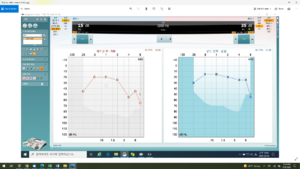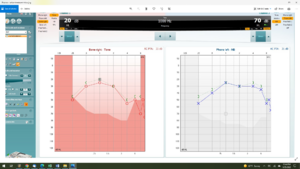So I emailed StemCells21 a few questions. I have hearing loss from a gig and I also had a TBI last year which is still affecting my vision.
Here are the questions I asked along with their answers. What are your thoughts? Legit or not? I know maybe 4 people have had stem cell treatment there but I've not seen anyone recently.
Regarding hearing loss and tinnitus treatment:
Question:
Endolymph fluid inside the cochlea is a harsh environment for foreign stem cells, how do you change the composition of the fluid before the procedure ensures the cells survive? How do you get inner and outer hair cells to grow in the right location to restore hearing rather than anywhere? How do you establish a connection with the auditory nerve to restore hearing?
Answer:
Yes, the endolymph is the fluid that is present in the inner ear cochlea, which is rich in K+.
But our stem cells procedure for tinnitus is not that we are injecting the stem cells into that inner cochlea area. We do not penetrate the tympanic membrane to inject the stem cells.
As I discussed with you during our consultation, the route of administration of our MSC stem cells to get to that part of the ear is, injecting the stem cells via the intramuscular injection in front of the ear lobe around the temporal region (the meridian points). From these injection points the stem cells will migrate to the inner ear and also the hair cells and not to the cavity of the inner ear. The stem cells are also not being affected by K+.
Once the stem cells are migrated onto those areas, it will start to repair and regenerate the hair cells thus gradually improve the hearing and tinnitus.
Question:
If the hair cells continuously reproduce how do you make sure tumours don't grow?
Answer:
Umbilical Cord tissue Derived Mesenchymal Stem Cells (UC-MSC) does not have the potential for carcinogenesis (tumor formation)
Only embryonic stem cells (that are obtained from the aborted fetus) can have the potential for tumor formation.
Regarding the TBI:
Question:
Can stem cells become axons? My neurologist believes my visual and cognitive issues relate to axon injury. I have a clear MRI scan showing no brain damage. Why use the type of cells you use? What is their benefit over other types of cells?
Answer:
Mesenchymal stem cells are multipotent adult stem cells that are present in multiple tissues, including umbilical cord, bone marrow and fat tissue. Mesenchymal stem cells can self-renew by dividing and can differentiate into multiple tissues including bone, cartilage, muscle, and connective tissue. In Juvenile states MSCs can also differentiate into other cell types such as cardiomyocytes, neural precursors and/or mature neurons, however this ability reduces with ageing or large scale laboratory culture expansion of MSCs.
MSCs have shown the ability to avoid a negative response from a person's immune system, allowing the cells to be transplanted in a wide range of people without fear of rejection. These transplants vastly increase the body's natural healing abilities and have potent anti-inflammatory and immunosuppressive responses.
MSCs possess several properties that are advantageous in the field of regenerative medicine and tissue engineering. Their potential for immunomodulatory, immunosuppressive, and regenerative properties has been widely used in the form of cell-based therapy for inflammatory, immune-related, and degenerative diseases.
Their use is beneficial in tissue regeneration given their capability to differentiate into several cell lineages, their homing capacity, angiogenesis, anti-apoptotic activity, and secretion of bioactive soluble factors (growth factors, cytokines, extracellular vesicles / EVs)
MSCs function in immunomodulation by inhibiting the proliferation of several types of immune cells through the action of cytokines and regulatory factors. Their anti-inflammatory effect decreases an immune response to inflammation, thus protecting the host. Anti-apoptotic activity of MSCs protects injured cells and preserves organ function.
Question:
How do the stem cells navigate to the right places and areas of injury rather than if you're not going to be injecting them directly into the brain?
Answer:
MSCs have the ability for selective migration toward a site of injury, in a process called homing. This means they can act as an efficient surveillance system, which detects changes in the environment such as the presence of inflammation. They have in fact been shown to travel to the site of inflammation from the injection site and subsequently induce the release of bioactive molecules.
For any defects of damages of the brain tissue or neurons, the route of administration of the stem cells will be Intrathecal (lumbar puncture) injection of the stem cells directly into the spinal canal. Once the cells are in the spinal canal, it will reach up to the brain and with the homing effect, the stem cells will go to the areas of the inflammation and damaged cells that need to be repaired and regenerated.

 Member
Member


 Any updates on how things work out will be highly appreciated.
Any updates on how things work out will be highly appreciated.